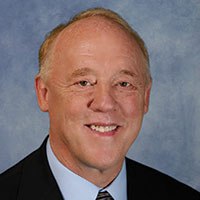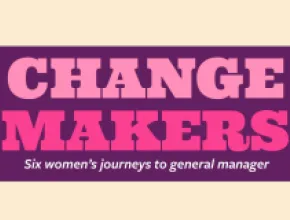As Meetings West celebrates its 20th anniversary, it is an ideal time to look back at meetings technology developments occurring during the past two decades.
1987
- It is quite an understatement to say that 1987 was a very different place technologically than today. The Mac computer had been released just three years previously, Windows 1.0 was 2-years-old, and e-mail and the World Wide Web as we know them had not yet been invented. The fax machine was just entering the marketplace, with the number of units doubling to 2.5 million over the next two years. PowerPoint 1.0 (originally called Presenter) was released this year, providing only monochrome images, one transition and only available for the Mac.
- Yet the wave of computerization was beginning to make waves in the meetings industry. Three meeting management software database programs were available: Amlink, MeetingPro/Peopleware and MeetingTrak. The first room-diagramming software had just been invented (MeetingMatrix), and, in 1987, MPI formed one of the first meetings industry technology groups: the Computer Special Interest Group.
- The large registration companies had developed computerized badge production and lead retrieval (via embossed plastic “credit” cards) for the trade show industry.
1988
- 1988 saw the beginnings of hospitality industry digitization. Sixteen hotel chains contributed $100,000 each to fund a startup company, The Hotel Industry Switch Co. (THISCO), to electronically link the global distribution system companies, such as Sabre, with hotels' computerized reservation systems. THISCO eventually became Pegasus, and now processes more than 300 million transactions per month.
- Also, 1D barcode emerges as the first generation of paper-based automated lead systems for trade shows.
1989-1990
- As the number of computers in worldwide use surpassed 100 million units (up from 1 million units in 1980), two companies, PCNametag and LasersEdge, developed software for laser-printer badges.
- 1989 is also the year that Sir Tim Berners-Lee invented the World Wide Web.
1991-1992
- As computer manufacturers introduced portable computers (laptop computers), calling them “freedom machines,” PlanSoft began the development of Ajenis, the first attempt to standardize meeting specification communications between meeting planners and hoteliers. The software eventually rolled out in 1995 but is not widely adopted, in part because of rising competition with Web-based tools.
- In 1991, the School Home Office Products Association is the first group to use smart cards (plastic cards with integrated computer chips) for lead retrieval at its trade show.
1993
- 1993 was a pivotal year in technology development. America Online and CompuServe connected their proprietary e-mail systems to the Internet, beginning the large-scale adoption of Internet e-mail as a global standard.
- As an example, MPINet, the first online discussion group for meeting professionals, was created as a forum on CompuServe. The formation committee met in December 1993 and the service came online the following month. It grew to more than 2,500 members before closing in 1997—for most of the members this was their first experience with e-mail.
- At the beginning of 1993, the World Wide Web had a total of 130 sites—growing to billions of uniquely addressable pages today.
1994
- To keep track of the websites of interest to them, two Stanford students create “Jerry's Guide to the World Wide Web,” which was soon renamed Yahoo!.
- The first software product to track meetings spend and sourcing was introduced by McGettigan Partners (now Maritz Travel). This evolved into Core Discovery, originally provided only to McGettigan clients. In 1998, the company released an upgraded version with a Web interface to the general public under the name Real-Planner. In 1999, this evolved into a separate company, StarCite, as a package of Web-based sourcing and consolidation solutions.
- The first blog (online journal) was started by Justin Hall. As of November 2006, Technorati was tracking nearly 60 million blogs, with many targeted to the meetings industry.
1995
- PlanSoft started work on www.plansoft.com (now www.mpoint.com), the first comprehensive searchable meeting facilities database combined with a request for proposal engine. This was a unique consortium of a privately held company (PlanSoft), two associations (MPI and ASAE), and three hotel companies (Marriott, Sheraton and Hyatt). It came online in 1997.
- Holiday Inn provided the first hotel website with the option of purchasing sleeping rooms online.
- Very significant in their eventual impact, the first online meeting registration tools emerged—all hand-coded by Web programmers.
1996-1997
- The San Francisco Miyako (now Radisson) Hotel offered the first online request for proposal, built by Cardinal Communications.
- Passkey, one of the original online housing companies, was founded by hotelier Bob Motley and meeting planner Brian Layton. The first Passkey-enabled single property meeting is for Sheraton Corp. in New Orleans for 900 people in 1998.
- Cardinal Communications created the Meeting Industry Mall, the first Web-based interactive meeting industry portal.
- Most of the major hotel corporations and meeting industry associations developed websites during this time.
- The first template-based meeting registration tool was released: RegWeb by Cardinal Communications. This allowed planners to set up semi-customized registration pages without a Web designer. This was the precursor to the hundreds of application service providers to follow.
1998
- Lee Travel provided the first generation of an online integrated housing, registration and air-booking product that incorporated zone fares.
1999
- EventSource (which became ProcurePoint, and is now out of business) and StarCite provided online auctions for the sale of meeting space.
- HotDatesHotRates.com was one of the first websites to offer “distressed inventory”—hotel meeting space and sleeping rooms—usually at short notice and at discounted rates.
- Some technology pundits predicted a total computer system collapse because of the Y2K bug (the inability of older computers to distinguish between the year 1900 and the year 2000). Almost no problems are encountered in the New Year.
2000
- Application service providers—companies that rent Web-based meeting applications (versus software installed directly onto a computer)—exploded onto the scene, fueled by enthusiastic venture capitalist funding. Several of these companies did not last past the tech bust in 2001.
- The first virtual trade show, ExpoExchange, was held.
- Shockfish's SpotMe PDA device debuted, offering a wireless handheld networking device allowing attendees to see pictures and contact information of other attendees standing within 20 feet of them.
- GetThere Direct Meetings provided the first online group space reservation tool. This was followed in 2003 by other group room block reservation tools such as Groople and Hotel Planner, primarily for small meetings.
- The APEX (Accepted Practice Exchange) initiative was started by the Convention Industry Council (www.conventionindustry.org)—the first voluntary standards initiative for the meetings industry.
2001
- Use of online meeting and collaboration tools such as WebEx and PlaceWare (now LiveMeeting) spiked after 9/11.
- StarCite offered the first Web-based, two-way, real-time RFP tool for meeting space and rooms.
2002
- Hyatt rolled out E-mmediate Meetings, an online meeting-booking tool designed for small meetings. From this came E-mmediate Response, the first real-time, two-way connection between an RFP site (in this case StarCite) and a hotel sales system.
- Web-based business meetings matchmaking programs were developed this year. The first was Columbia Resource Group’s (www.crgevents.com) Rio product. Others to follow are IntroNetworks (www.intronetworks.com) and ExpoExchange’s Smart Event (www.expoexchange.com/products/rs_smartevent.html). Similar to widely used social matchmaking programs such as www.match.com, these programs assisted attendees in finding people of like interests at meetings.
- Mobile Web logs (MoBlogs) were first used in a meetings setting, with technology companies leading the way.
- StarCite, working with Outtask Inc., offered the first online real-time group air booking product.
2003
- Intellibadge is the first to use RFID (radio frequency identification) to track attendee movements in the exhibit hall and meeting rooms for IEEE meetings.
- Intel incorporated Wi-Fi (wireless internet receiving capability) in its Centrino chip. Wi-Fi (wireless fidelity) high-speed Internet access is now widely deployed in hotels, convention centers and airports.
- The first product from APEX (its Online Glossary: http://glossary.conventionindustry.org) was delivered.
2004
- The number of online bookings for Hilton Hotels exceeds those of its call centers.
- Two of the major meetings consolidation vendors, PlanSoft and SeeUThere, merge to form OnVantage
- The phrase “Web 2.0”—the second generation of the Web, with a heavy emphasis on interactivity—was coined by O’Reilly Media, with huge potential for the meetings industry.
2005
- Further progress is made with the APEX standards initiative. Significant advances are made for recommended voluntary standards, including meeting history, request for proposals and housing/registration. APEX Toolbox 1.0 is released with templates for RFPs and other tools.
- The two oldest meeting planning software firms (Peopleware and Amlink) merge.
2006
- The two largest meetings consolidation technology vendors, OnVantage (a merger of PlanSoft and SeeUThere) and StarCite (a merger of StarCite, b-There and RegWeb) merge. This was the meetings industry equivalent of Microsoft and Apple merging.
- iTunes downloaded its billionth file in May 2006, indicating not only a trend in music but in the strengths in podcasting, an application with great potential for the events industry.
- APEX and other standards initiatives continue to make progress, with efforts in developing an XML data map—which will eventually allow for electronic data interchange (EDI) and true data standards for the meetings industry.
- Web 2.0 technology is increasingly used by the meetings industry, allowing greater interactivity and a variety of methods to get online information, including blogs, video blogs, Wikis (interactive websites) and mashup sites (websites that combine information from other sites).
- Mobile phone technology such as www.log-on.nl moves into the meetings space, providing a variety of tools, such as product directories, networking functions, schedules, and audience voting via standard Web-enabled cell phones.
The Next 10 Years
It has been an amazing ride in the past 20 years. But hold onto your hats, as the rate of change is accelerating—things will likely change as much in the next 10 years as they have in the past 20. The good news is that as the systems mature, things will get easier with smarter technology. However, an attitude that embraces and thrives on change will be one that should be encouraged, internally nurtured and considered when making hiring decisions—it will be a key characteristic for success.






